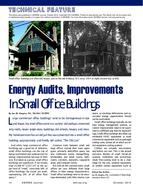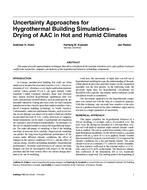A storage system encapsulated with phase-change materials (PCMs) in which energy is absorbed in the hot period and released in the cold period is discussed in this paper. The thermal behavior of phase-change storage composites has been studied using numerical techniques. Two low-temperature thermal walls have been examined as an internal layer of identical test cells with the same heating and cooling control system, with setpoints over and under the phase-change temperature range. This strategy causes the storage and release of heating energy from PCM composites. The temperature of the composites and the latent heat flux have been estimated using the refined ESP-r system with an additional PCM modeling procedure. This procedure, based on the so-called effective heat capacity method, introduces an additional temperature-dependent function of material capacity. The function is continuous and linear and has a finite width pick between the melting and solidification temperatures, which can be easily obtained from laboratory measurements. Additionally, the effect of layer thickness and phase-change temperature range on the thermal storage behavior of the material has been analyzed.
Units: SI
Citation: Symposium, ASHRAE Transactions, vol. 112, pt. 1
Product Details
- Published:
- 2006
- Number of Pages:
- 8
- File Size:
- 1 file , 3 MB
- Product Code(s):
- D-27923


